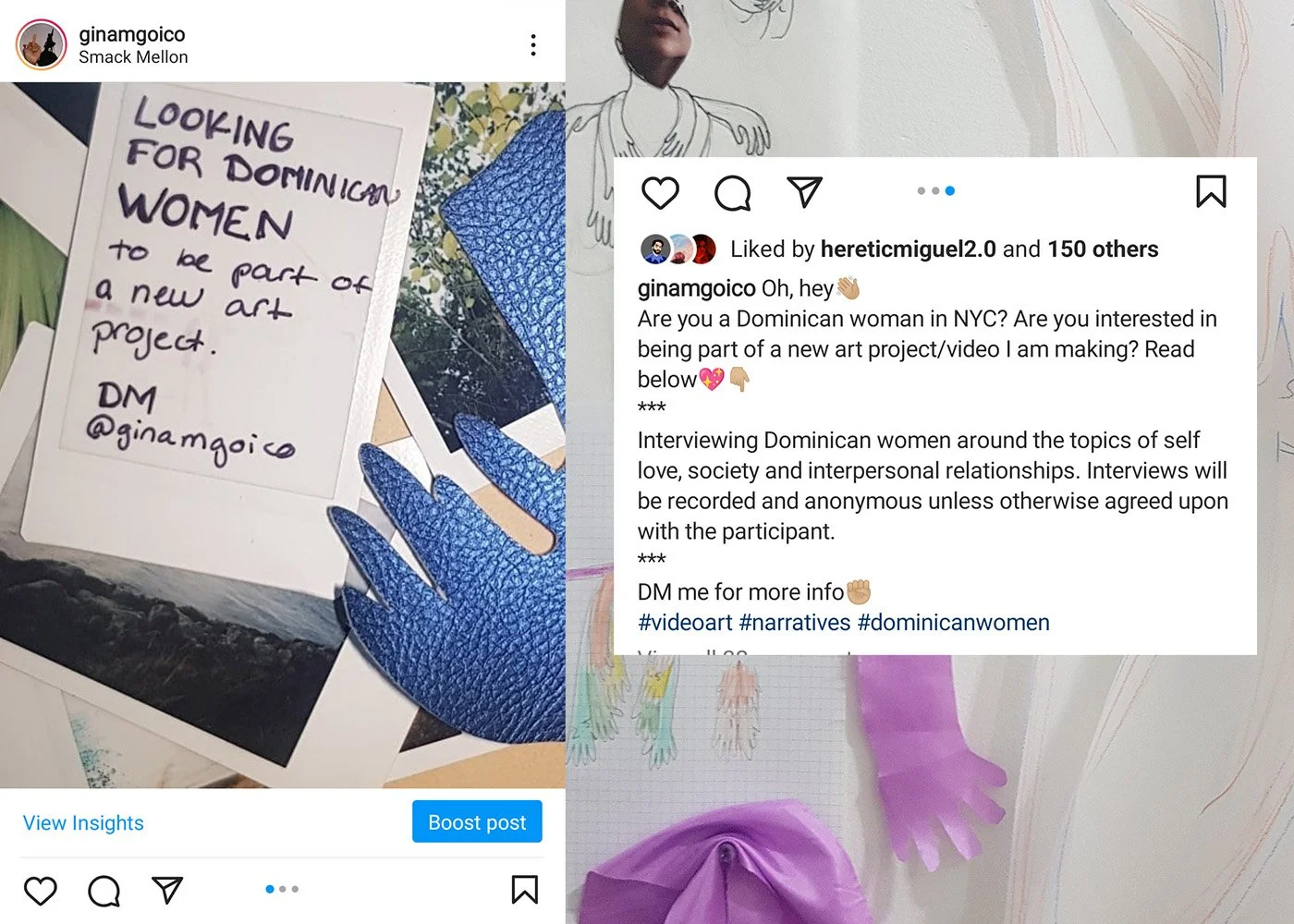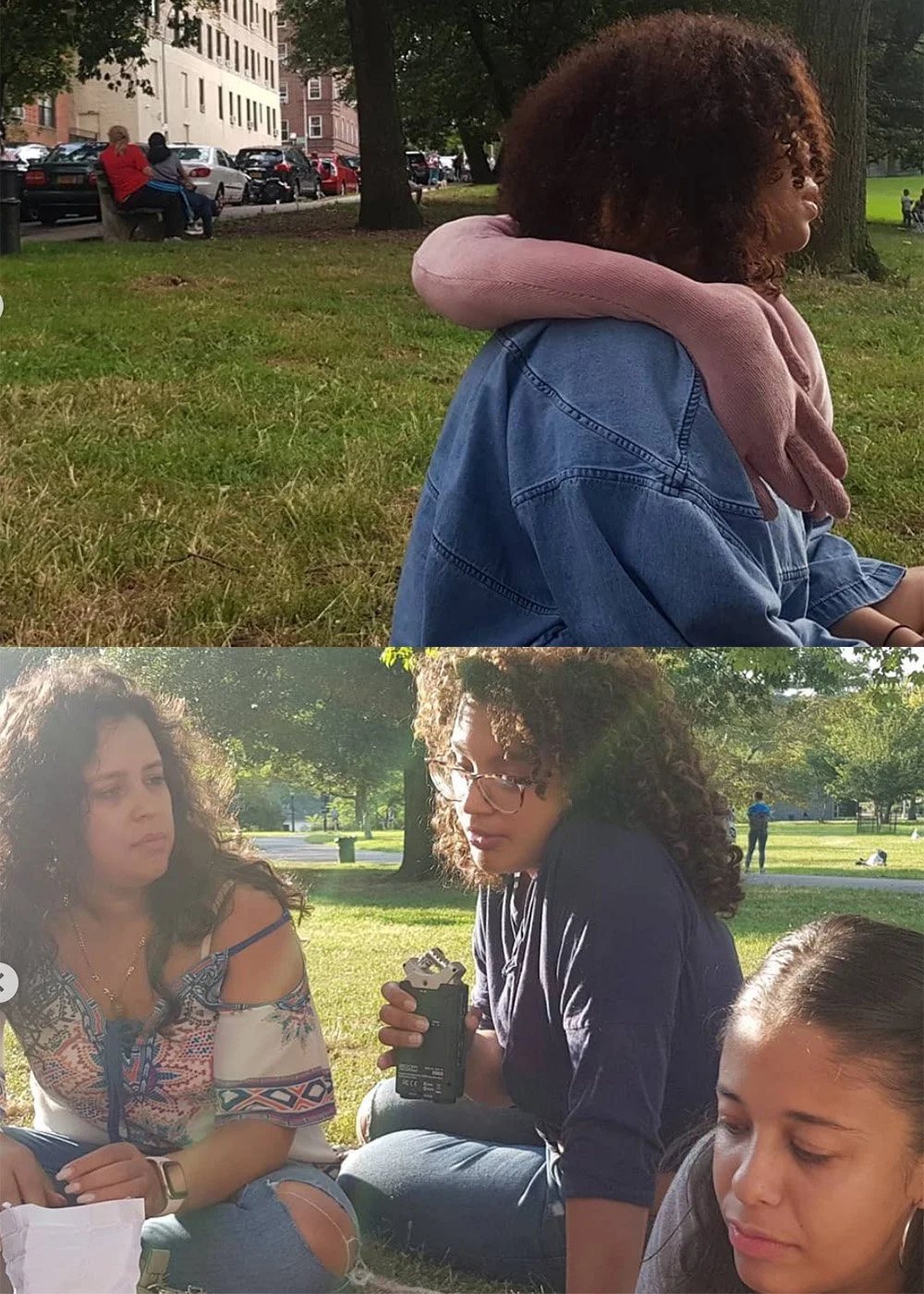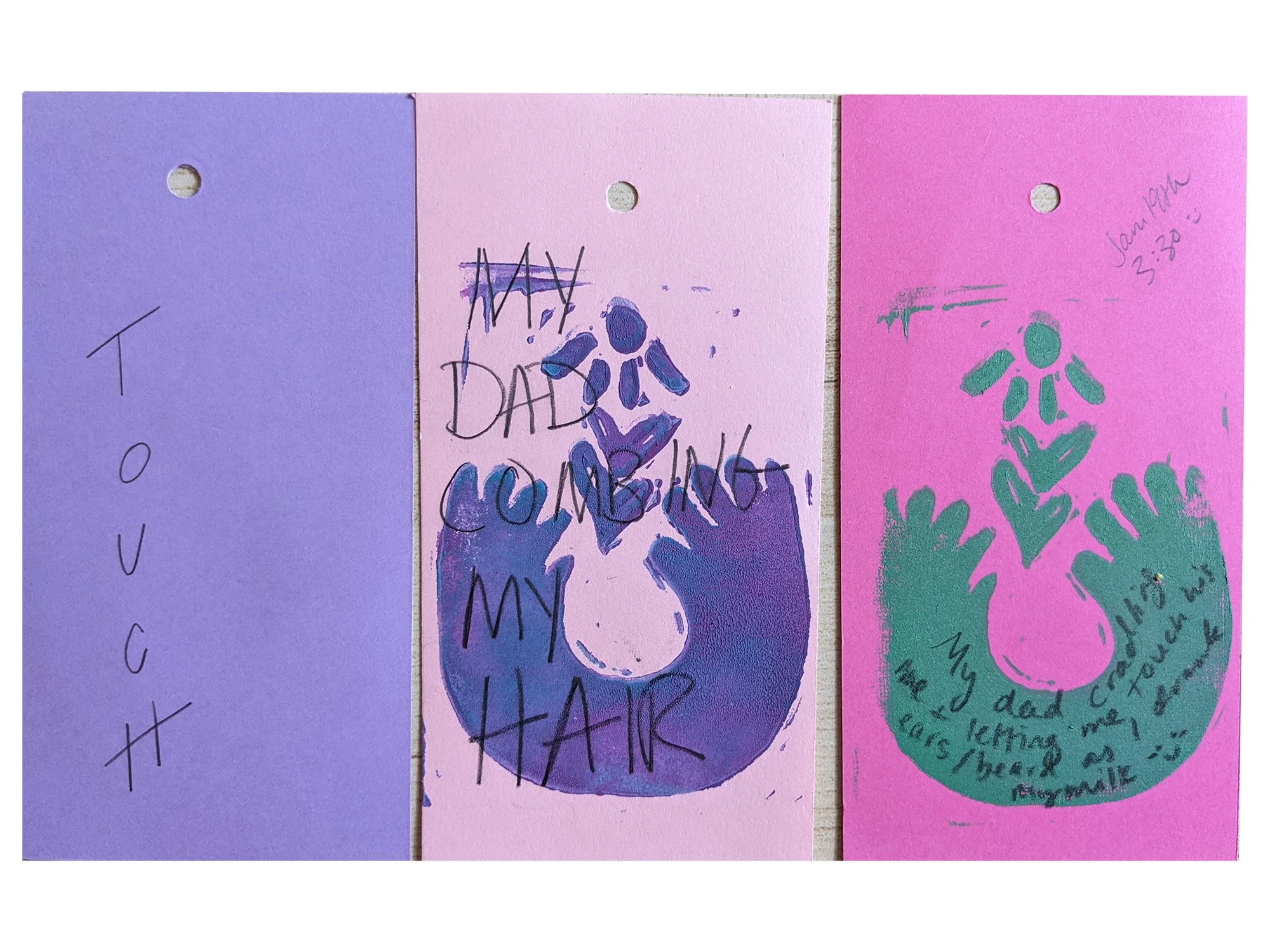LovingSUITS: Memory, love and temporary communities in Diaspora
Images
Image 1:
Open call through instagram to get participants
These screenshots are from the original open call made in August 2019 to recruit participants for the LovingSUITS interviews. Originally, I wanted to get ~15 participants to create an audiovisual narrative that speaks about memory, love and family. The image was an impromptu design- reusing a damaged polaroid picture and writing directly onto it. The photo was then placed on top of some of my sketches and posted as a carrousel onto Instagram (IG). To avoid letting participants know what the prompts were, a general description of the interview which declared that the topics would be around “self-love, society and interpersonal relationships”. The post called people to reach out through my IG direct messages, where I would ask for their emails to send a final formal invitation. Because there were over 50 requests received on the first week of posting the open call this open call changed the way in which these interviews were conducted.
Image 2:
Interview photo documentation
These are one of the only existing photo documentation of the interviews- where one can see some of the participants of the September 8th group interview. This interview was made for the participants that lived or worked near uptown Manhattan. The site was Inwood Hill park, and the participants were invited to sit on top of a pelliza (a traditional Dominican rag rug). There were two LovingSUITS soft sculptures available for the participants to play or engage with. In this composite photo one can see at the top, one of the participants engaging with one of the LovingSUITS soft sculptures after narrating her first memory of love. On the bottom half, one can see a group of three participants: One is holding the audio recorder in her hands, while the other two lounge listening to the story being told. The group, which had some people who knew from social media of each other, became quickly intimate as the narratives were being told.
Image 3:
Interaction responses #1
In this set of responses, three different audience members wrote that their first memory of love pertained to embraces. These are from the first 3 batches of responses from the exhibition at the Bronx Museum of the Arts, where the response cards were directly stamped with the linocut design made by me. From left to right, the first answer says that their first memory of love was “realizing I wanted to hug someone else”. The second response remembers their mother’s hugs, and the last, their uncle ben’s embrace. The first and third respondents use the stamps’ silhouette of the embrace to write their memory, while the second places their answer beneath the symbol. The use of the stamps as a container of memory, or the response as a description of the stamp- adding to the fact that these were all related to embracing- were one of the reasons these stood out from the bunch.
Image 4:
Interaction responses #2
This set of responses, also part of the first 3 batches, reference to the haptics of memory. From left to right, the first answer just had written vertically “TOUCH”, the second, on top of the stamp says, “My dad combing my hair”. The third one is using the silhouette of the stamp as the first responses posted before, but this response was not part of the same batch as those. The response says, “my dad cradling me + letting me touch his ears/beard as I drank my milk 😊”. I am interested in how touch can become a place of intimacy and love within one’s formative years when it is used within quotidian actions (combing one’s hair, touching the caregiver’s face while being fed). There are many other responses that are similar to these, but usually are placed within a single moment or memory. These three responses open the site of “memory” as a continuum of actions across time.
Image 5:
Interaction responses #3
These four responses are part of the last batch, where instead of a stamped card, there is a printed card. Each card had different illustrations (5 different ones) that are found within the video art piece in the show. The responses (from left to right) say that their first memory of love was their father’s lullabies. The second one talks about how their memory of love pertains to their father reading bible bedtime stories. This audience member says that, even if they are now an atheist, these bible stories are deep in their narrative. At the end this participant says: “His love gave me love we were love [sic]”. The third response places their memory on being held by their grandfather while listening to boleros. The fourth response speaks about when the audience member’s mother would read them bedtime stories, hugging her goodnight and never wanting to let go. The sonics and narratives of memory is another place of interest in this project. What are the sounds of love? How are the narratives we listen to connected to our understanding of love?
Image 6:
Interaction responses #4
These are also a group of responses from the last batch from the interactive piece. The responses (from left to right talk) express that their first memory of love stems from realizing the power of self-love. The first response states that their first memory of love was finding themselves. The second one states that it was when they finally realized that they were enough and attracted those who understood. On this card, below the illustration the audience member wrote “~self love~”. The third one says, “looking in the mirror”. The last one states, “Dancing alone in my room or liveing room that I made myself [sic]”. These group of responses explicitly place love within the practice of self-reflection, acceptance and embodying oneself. I am interested in the process that allows a person to come to love within these explorations. What histories happened before coming to the realization of the self?
Image 7:
Interaction responses #5
These two responses, part of the last batch, place their memories in first experiences that engage the senses. From left to right, the first one states that their first memory of love was the first time they floated in the sea. The second, was the first time they tasted sugar. I consider the notions of pleasure and embodiment in these two memories. The body being suspended while being embraced by the vastness of the sea – the accomplishment of letting the body just be and being held by water. The pleasure of tasting. A new experience that opens a new horizon within taste. I wonder about those moments and how they relate to and expanding sense and definition of love? Within the poetics of describing love, the sea, floating, taste and sugar come up often as symbols and metaphors. These are one of the first times someone connects in this project this imagery to their own experience.
Image 8:
Interaction responses #6
These three responses were one of the only ones where the absence of memory was addressed. The first one (left to right) says “Nothing” and below, written in small print, “¿Bad?”. The answer questions the lack of memory immediately after saying there isn’t one present – and the questioning is whether this could be a negative thing. The second one just says “I don’t remember ☹”. The negative is also implied. Finally, the last one states that they don’t believe they have a memory of love or can’t remember this because they are depressed. There is a hope to find one. The apologetic part, excusing themselves for having a depressing note, is also something to look at. I have two questions lingering regarding this – Would the absence of memory be regarded as a neutral fact (instead of a bad one) if these folks would participate in a group interview? Or would a memory come up after listening to other’s reflections and the ways in which they address their own memories?







